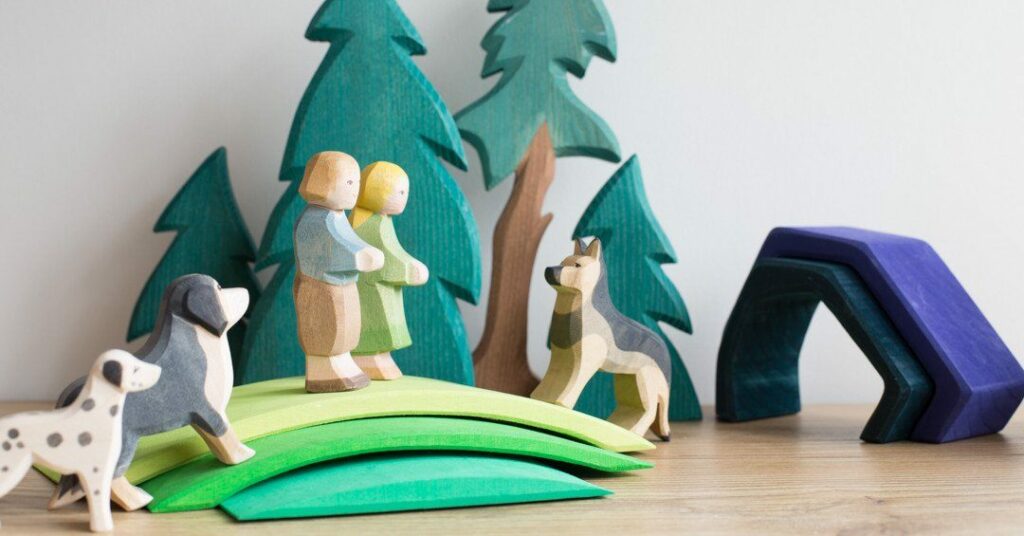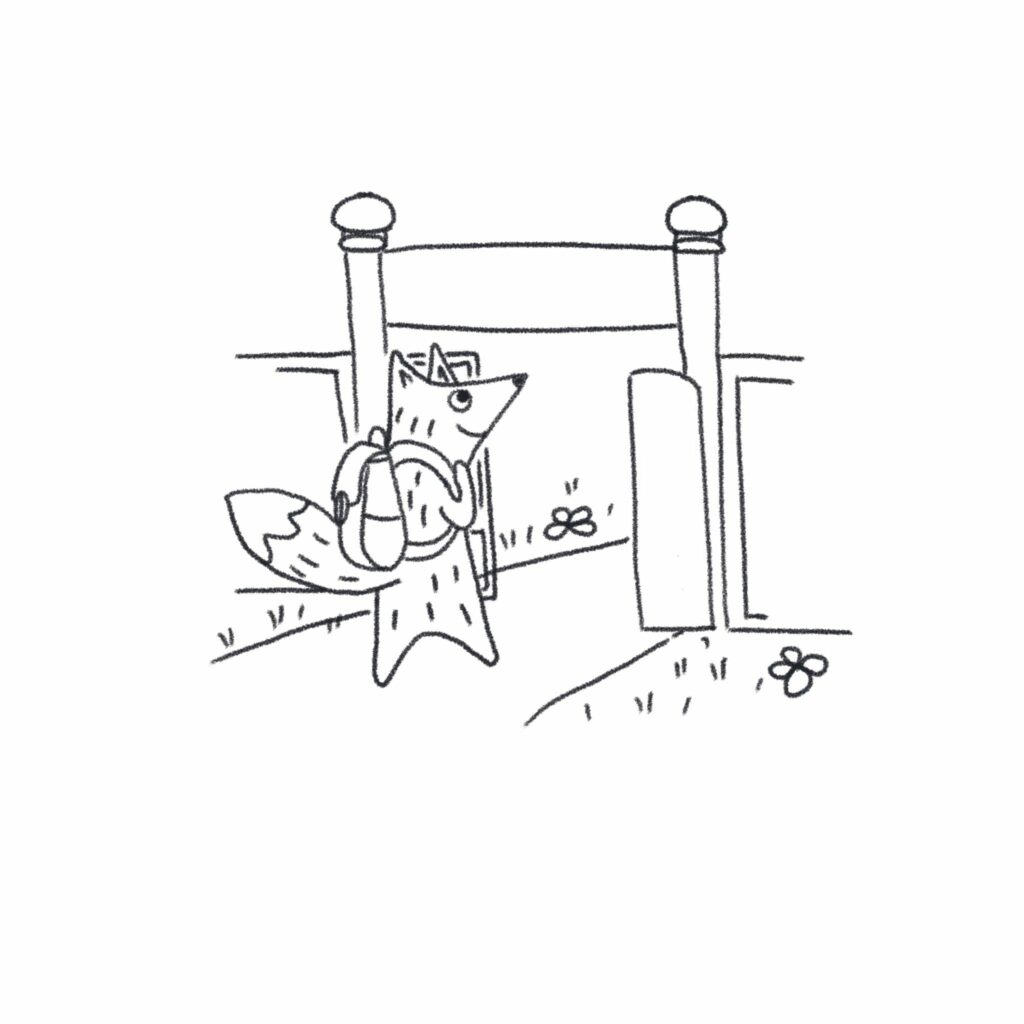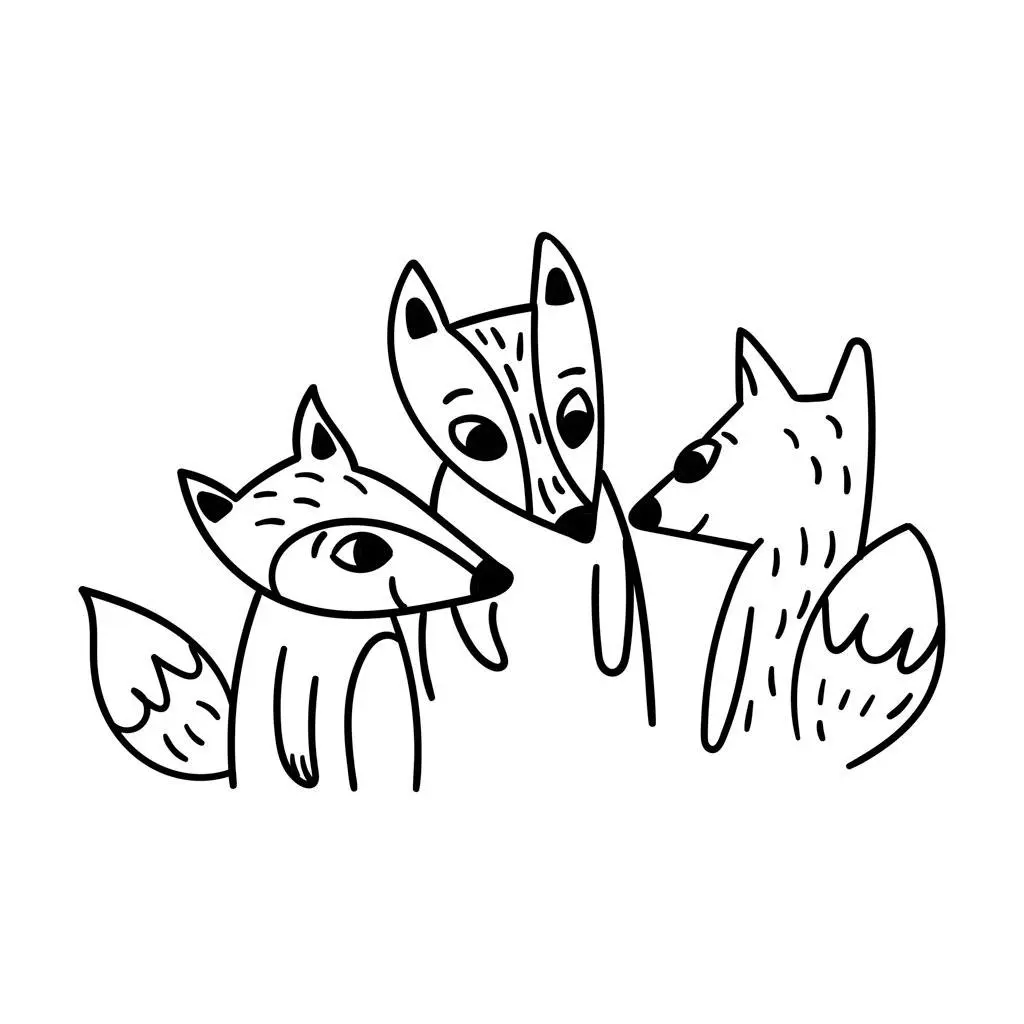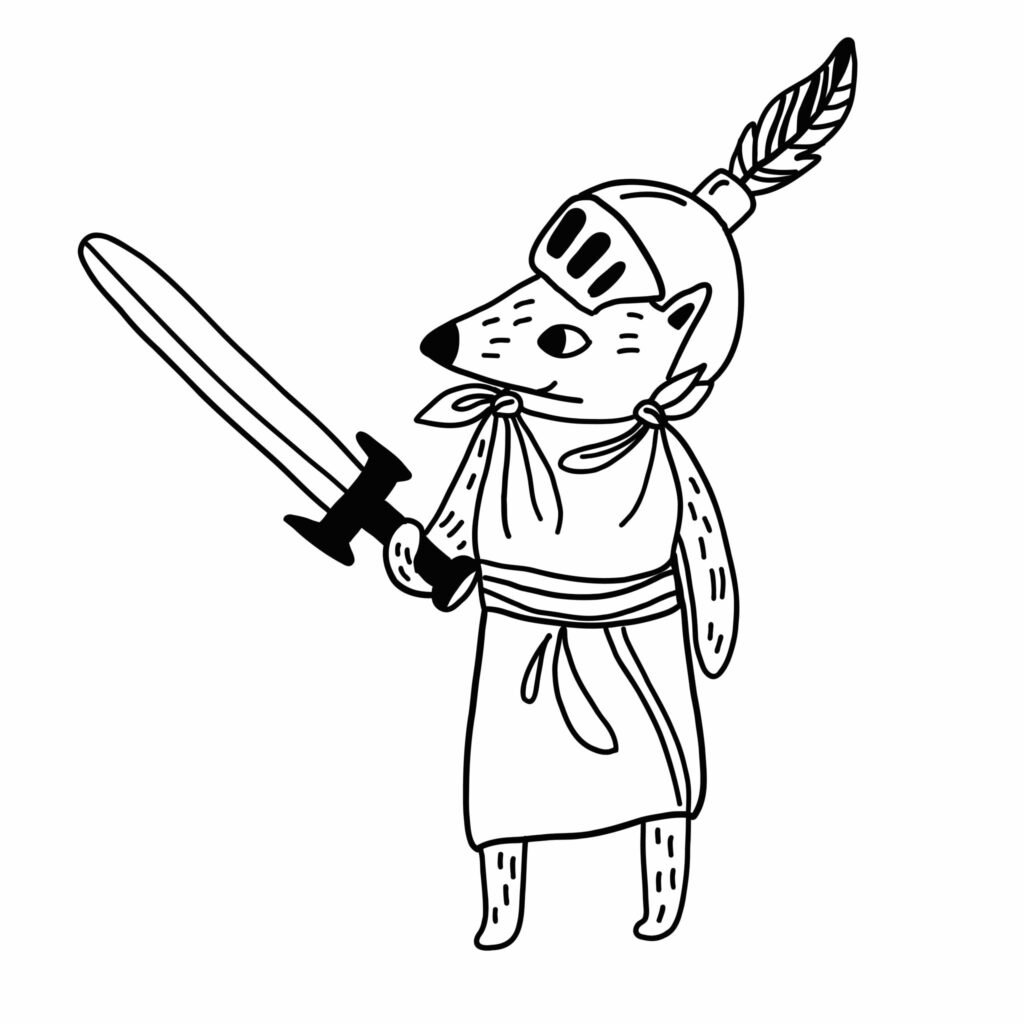Ostheimer make some of the most special toys we offer. The company was founded by Walter and Adeline Ostheimer in Germany in the 1930s Germany, and the ethos behind their products remains the same almost a century later. The child’s imagination is at the heart of every toy they make.
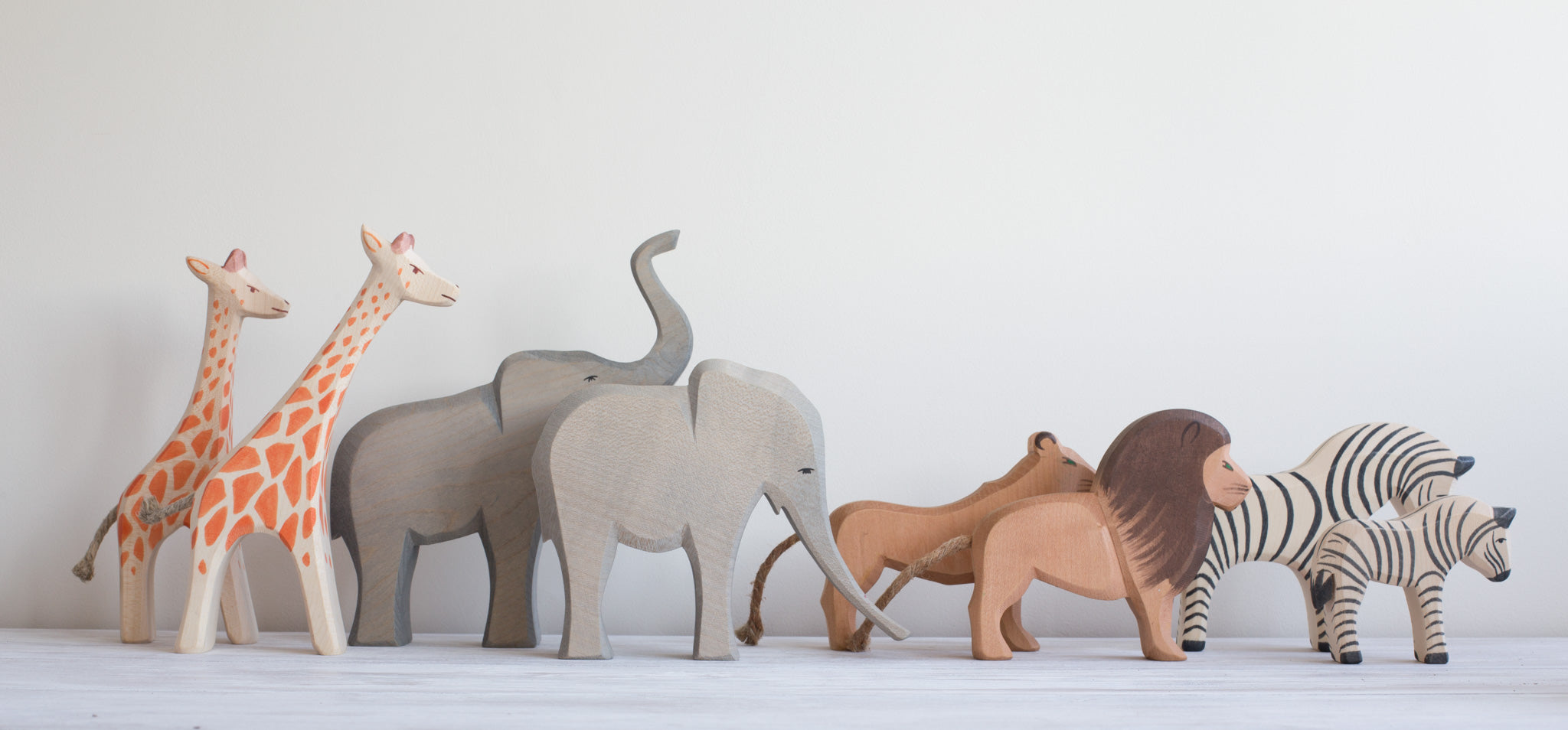
Ostheimer Wild Animals on Parade
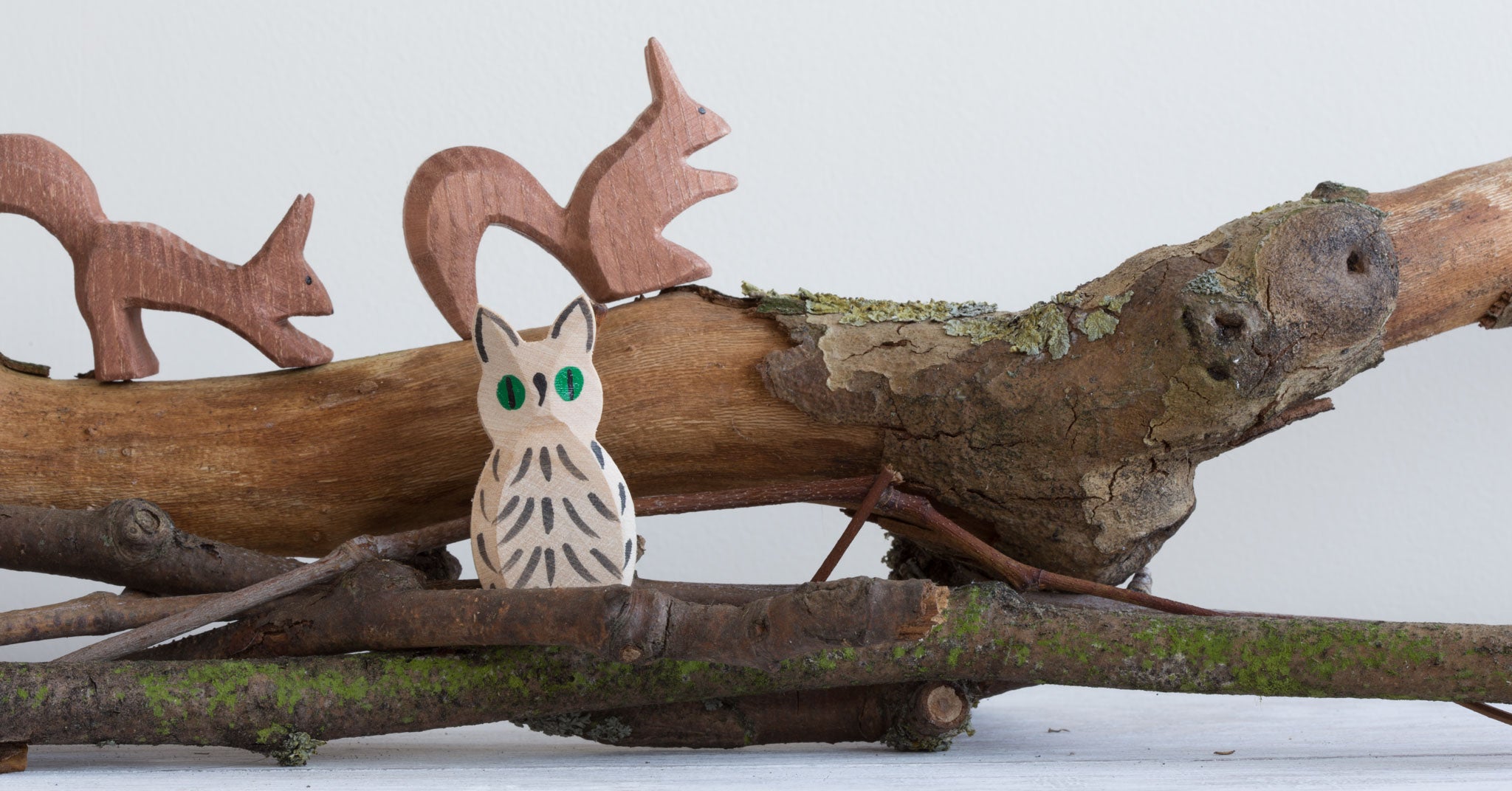
Ostheimer figures are at home with natural materials
To modern consumers, Ostheimer toys might look almost too simple – their figures and buildings are pared right back and painted in muted, natural tones. Shapes are basic, themes are broad. But it’s the simplicity of these exquisite, hand-crafted toys that makes them such perennial favourites.

Ostheimer Children and Dogs
Being so neutral means the child can bring their own meaning to each piece, and that meaning can change every time they engage with the toy. Children love the toy because of the fantasy they attach to it, not the toy itself. They want to play with it because of what it enables them to do, not because of what it can do on its own. And you don’t need many figures to create a compelling story. Read this post to see how easy it is to create a whole universe with just a handful of figures.
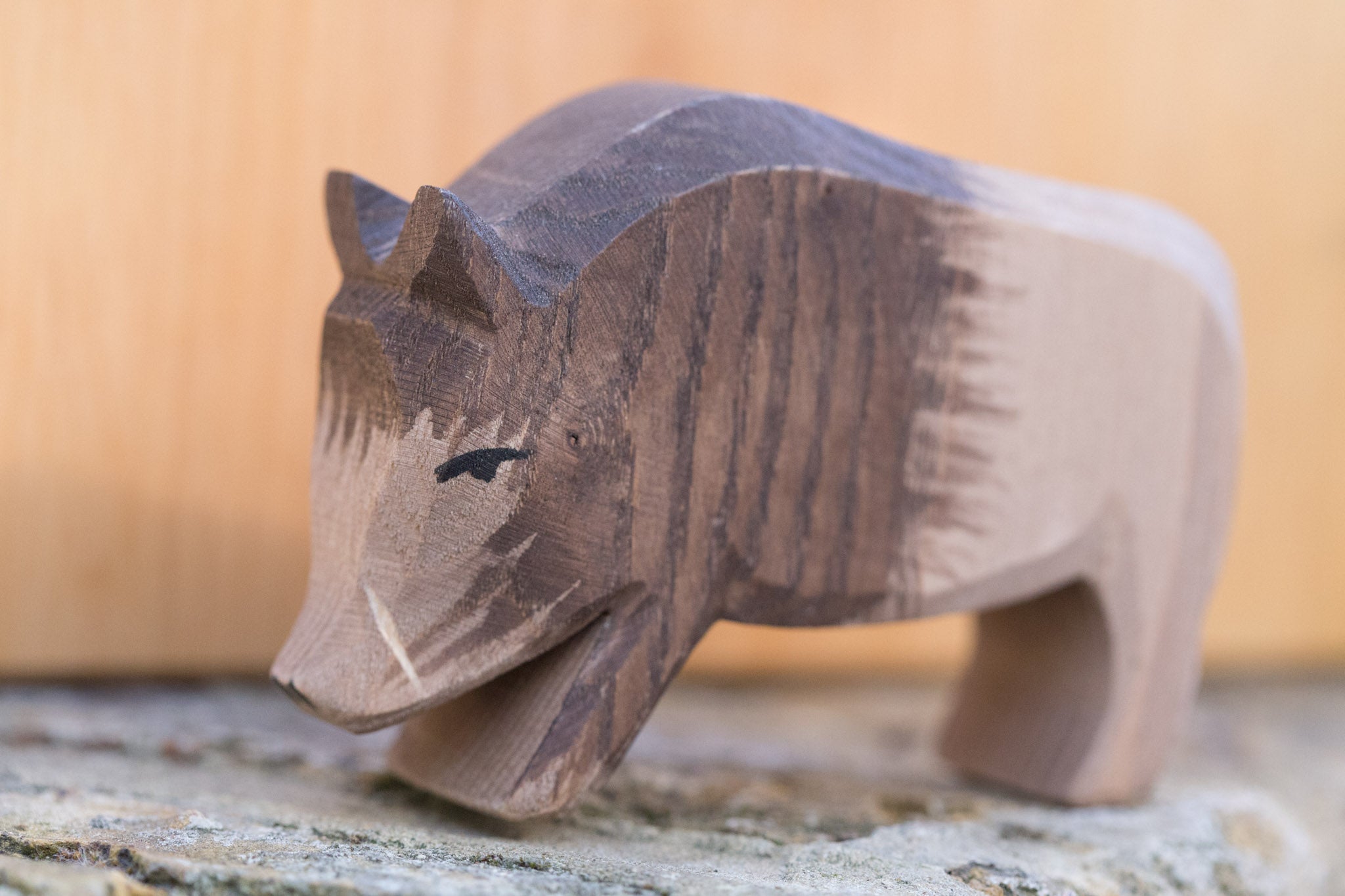
The characterful Wild Boar
We also like that each toy goes through many hands on its way to becoming a finished product – something which shines through in each item, no matter how large or small. Every one is designed, sawed out, sanded, rubbed down, painted, and oiled by a highly-skilled craftsperson. Because they are made with such love, we find that children love them too.
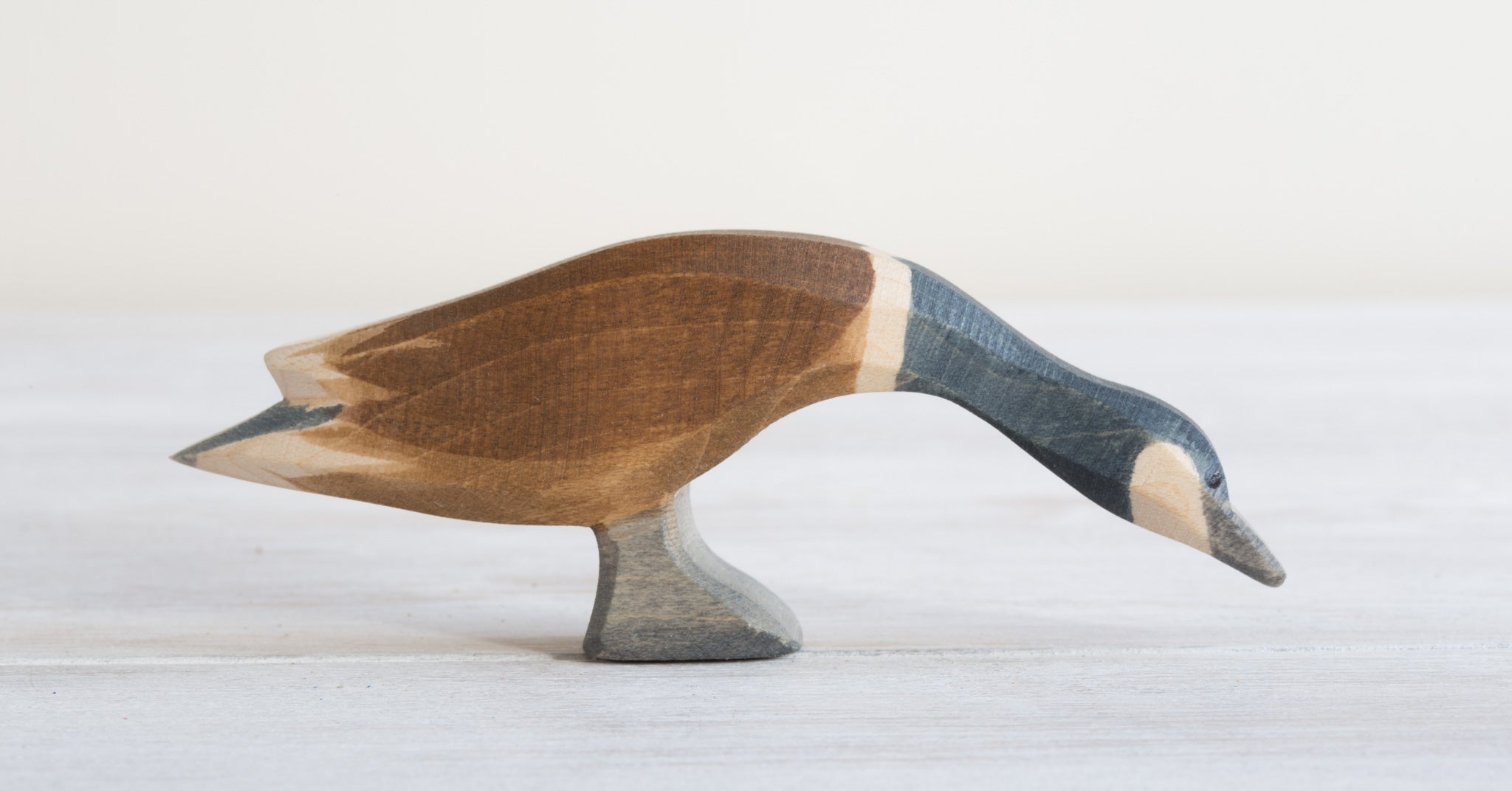
Ostheimer Canada Goose
How Ostheimer toys are made
Have you ever wondered how Ostheimer wooden figures get to be so characterful and unique? They’ve been handmade in the same slow and steady tradition for almost a century. Thanks to a wonderful display at the recent Nuremberg toy fair, we are able to show you how an Ostheimer figure comes to life.
Design
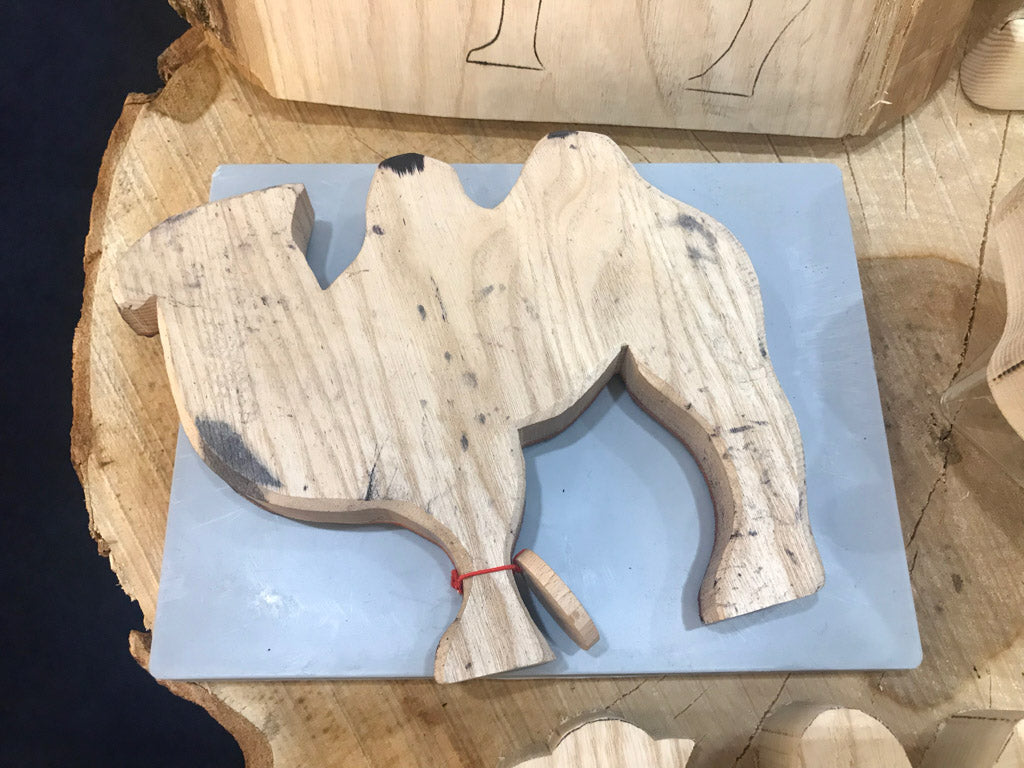
A stamp is created, and is fixed to the underside of a wooden blank (see image below). This is then inked and pressed onto a board, giving an outline that can then be cut out.
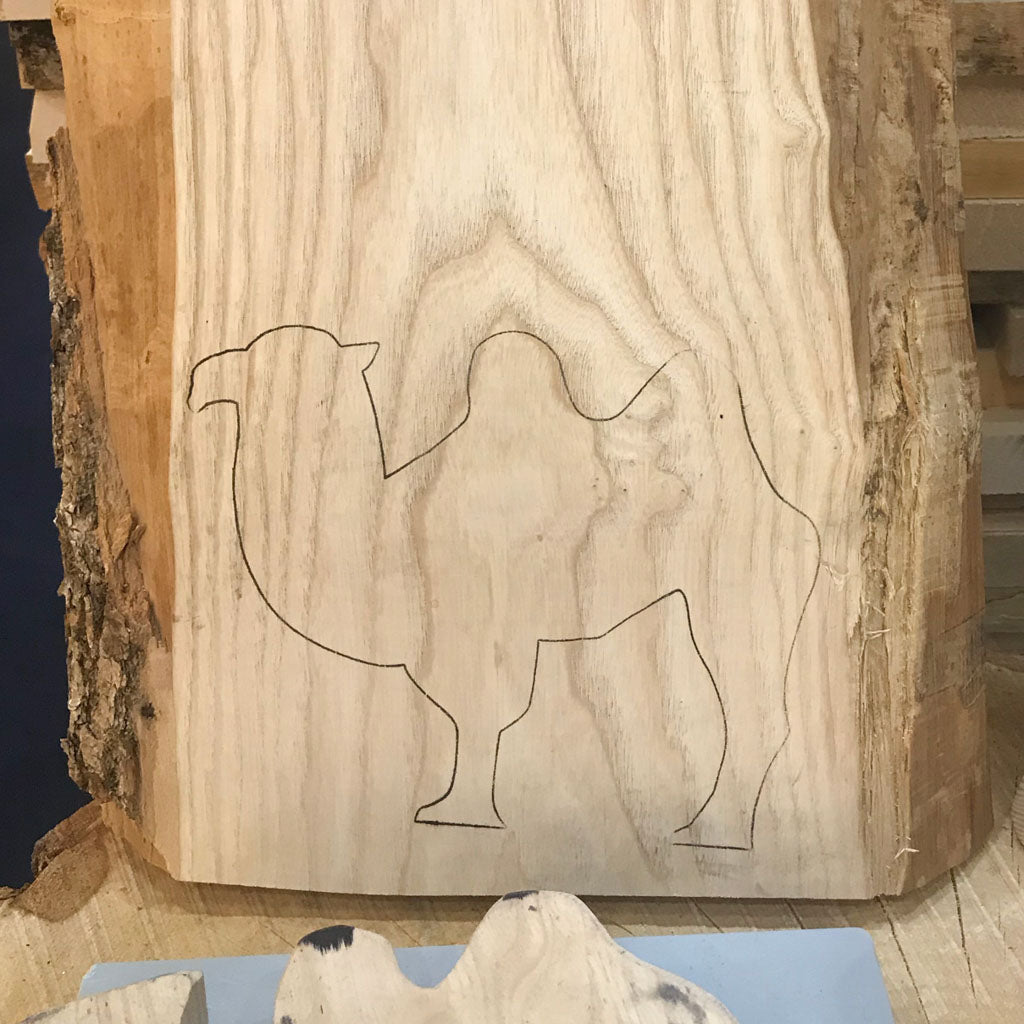
The stamp is positioned in such a way that the shade and grain of the wood is sympathetic to the type of animal or person it will come to represent. The camel pictured below would have a very different feel if the grain ran horizontally.
Sawing
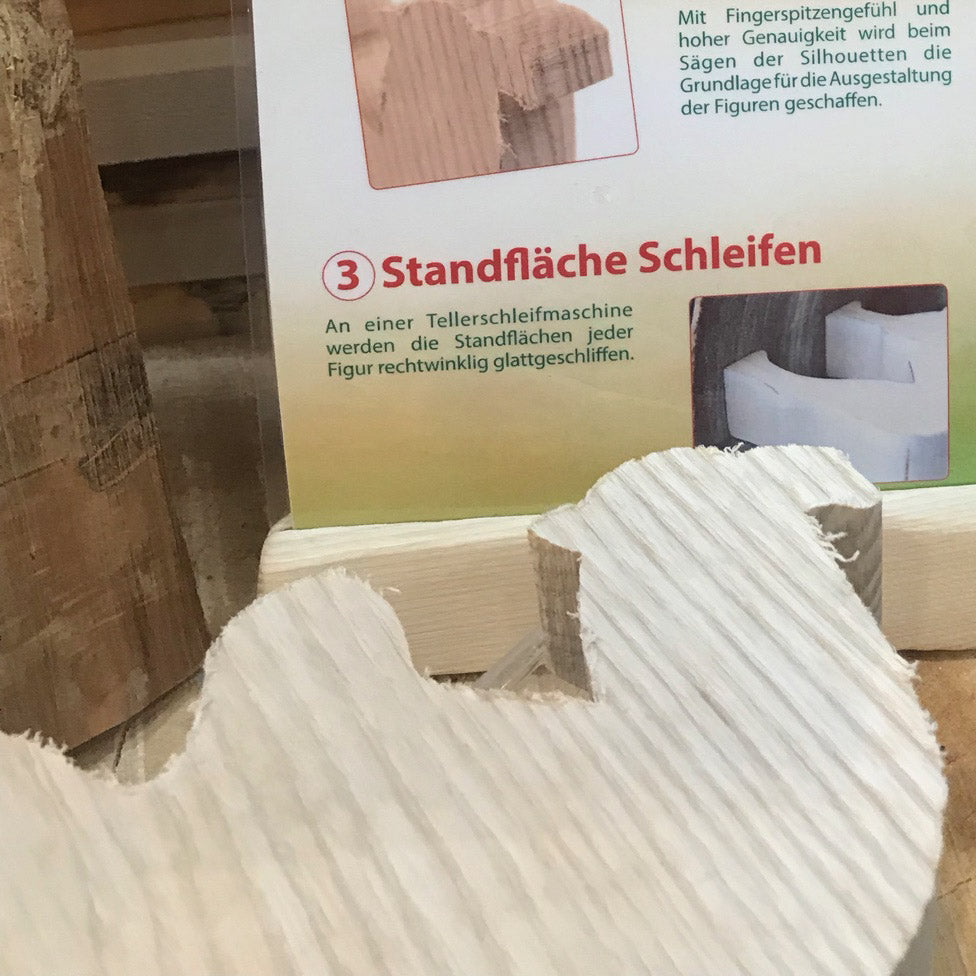
The correct profile is meticulously sawed out, creating a blank for the figure. At this stage the edges are extremely rough.
Sanding
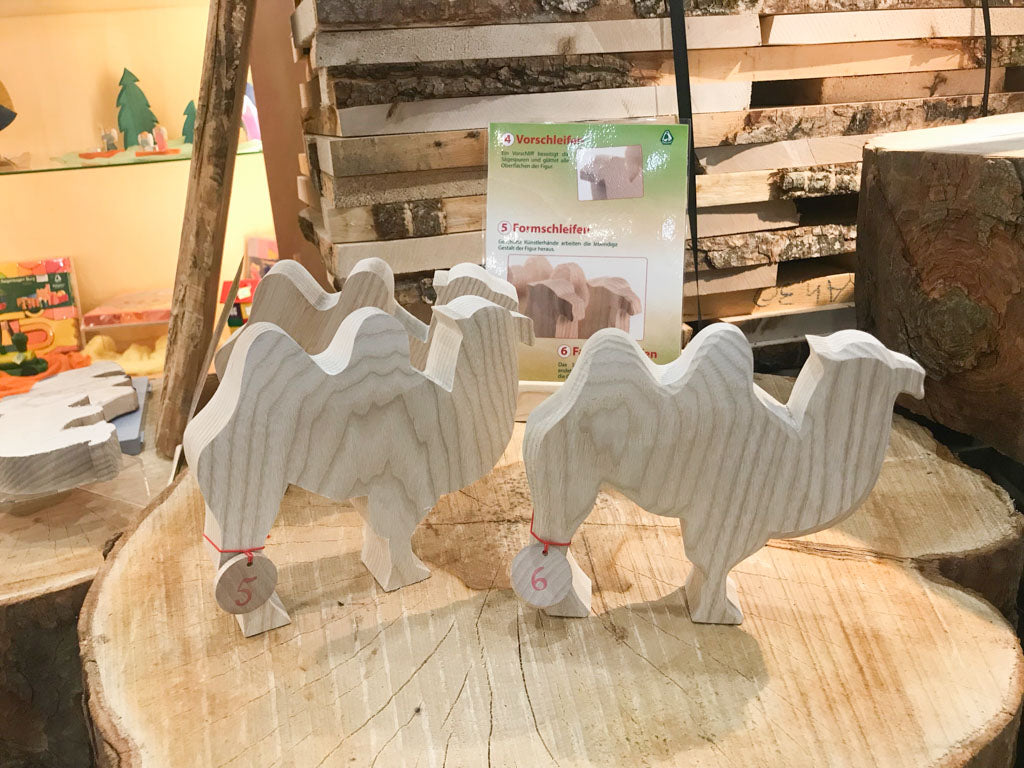
The figure is sanded to remove sawdust and smooth the surface of the wood. Then the figure is brought to life with greater detail on the main body, depicting muscles or limbs, smiles or hands. A soft final touch of the contours finishes the process prepares the surface for painting.
Oiling
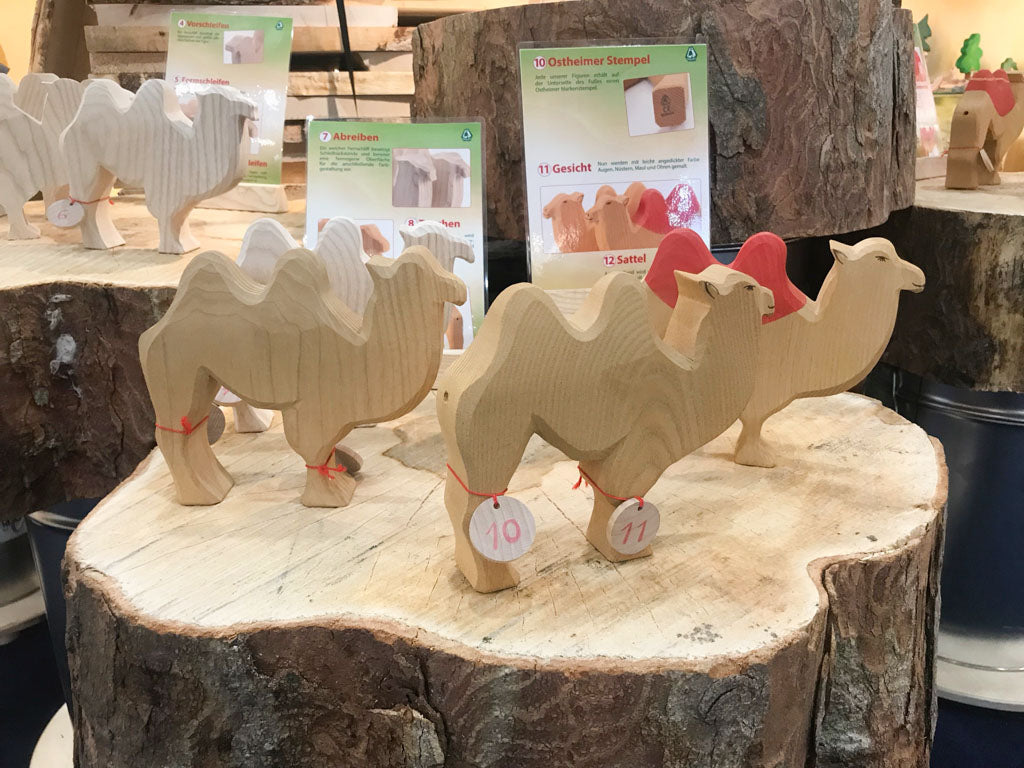
The figure is immersed in high-quality organic oil, which helps maintain colours and protects the surface of the toy.
Painting
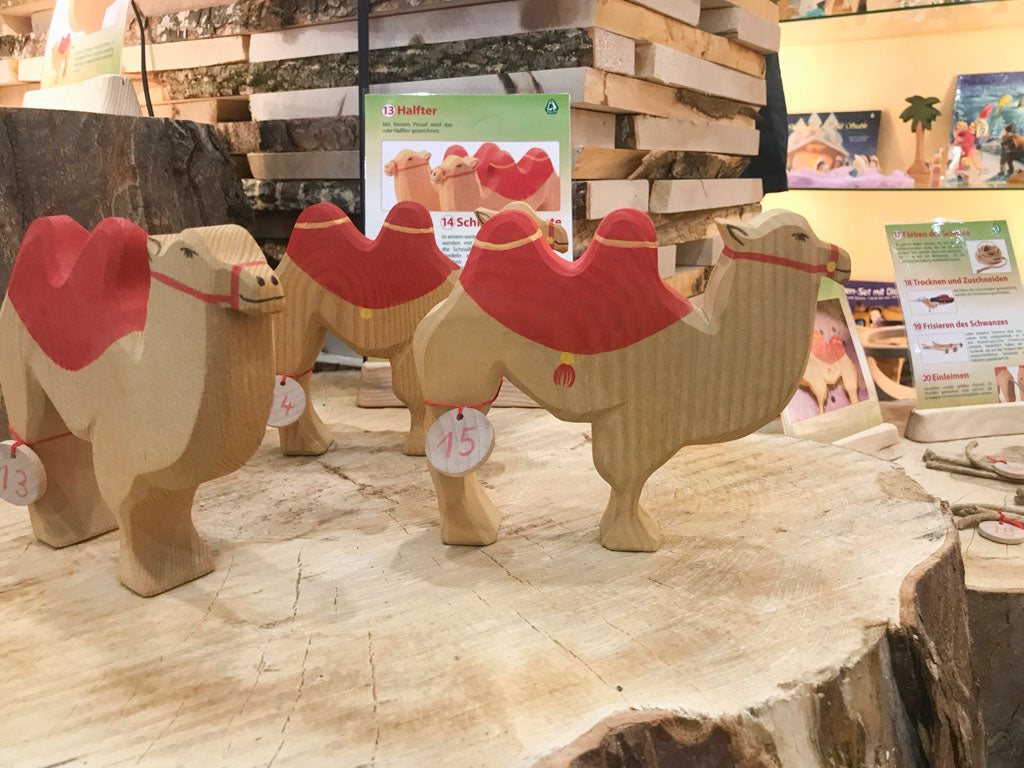
The figure is delicately painted with a steady hand and a fine paintbrush. Transparent colour-stains allow the texture of the wood to shine through and enhance the natural warmth of each figure.
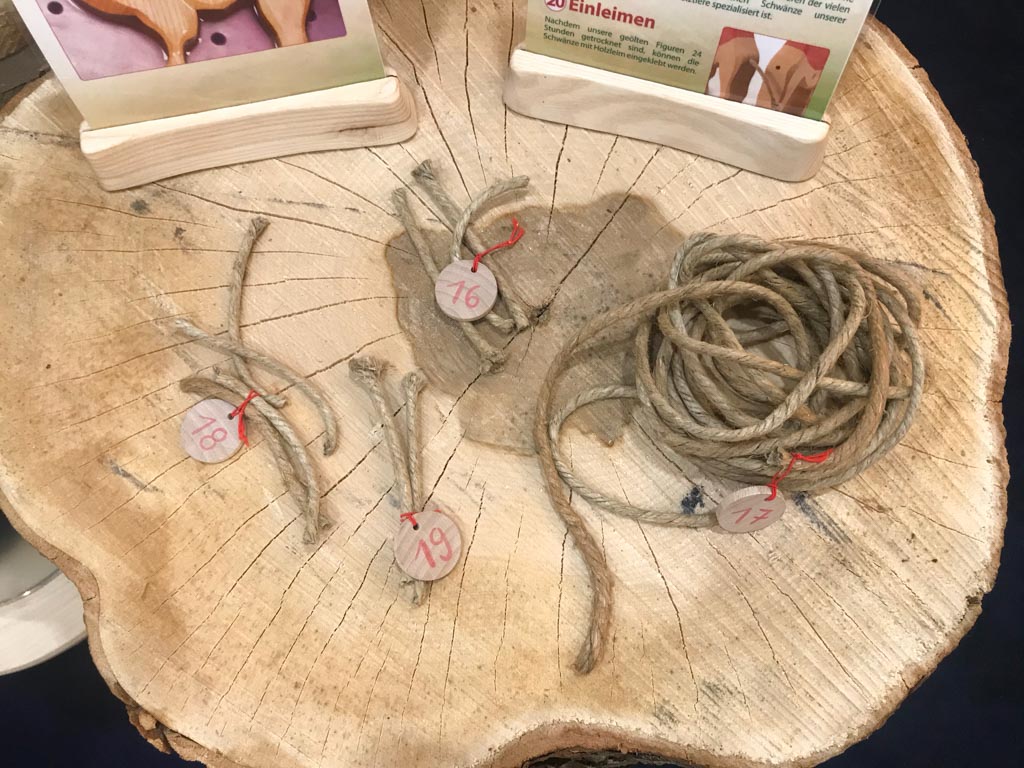
String is cut for the tail.
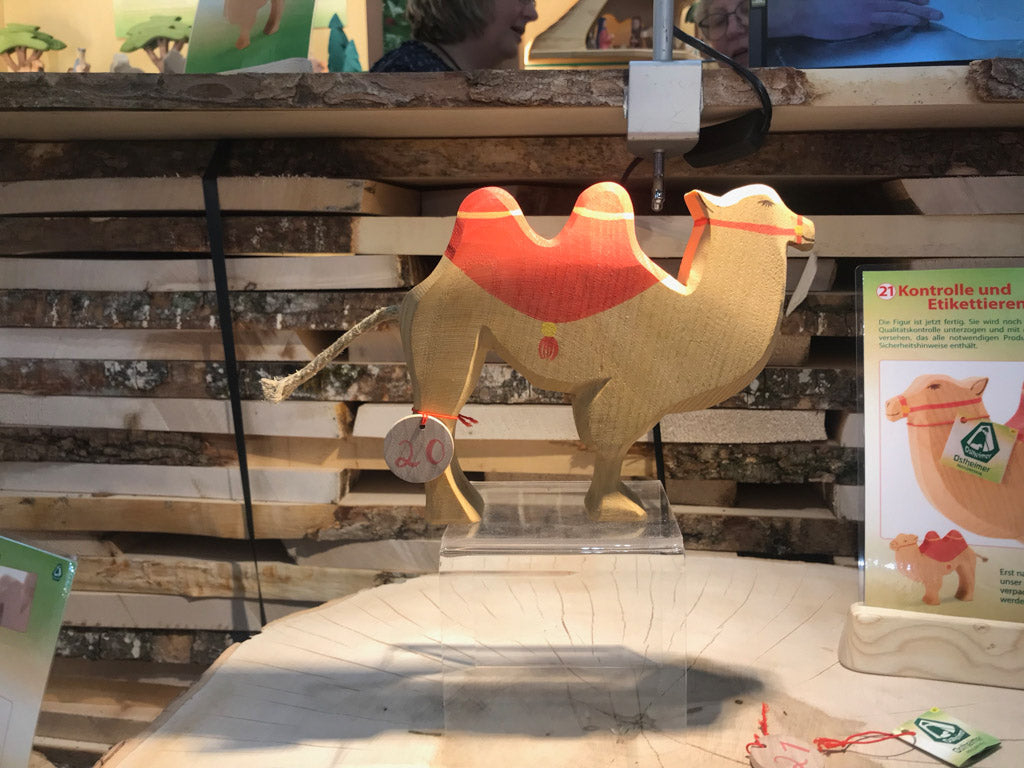
After a final quality-check, Ostheimer figures are carefully packed and delivered to children all over the world.

